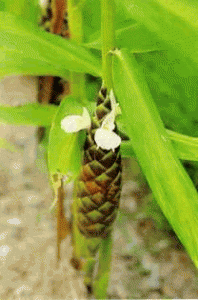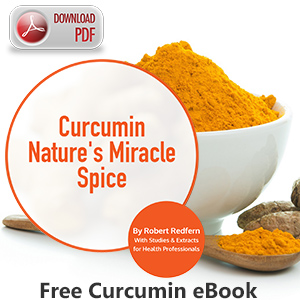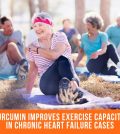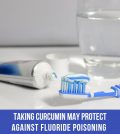Curcurmin Curries Much Favour with Alzheimer’s
Helen Knowles is an Essential Oils advisor to the ICM and qualified as a counsellor, aromatherapist and electro-crystal practitioner. She also holds a certificate in the Science of Essential Oils (NORA) and has been trained in the use of Bach Flower Essences with a continuing interest in interrelated vibrational medicine. Here she describes some of the mounting evidence for the potency of turmeric to combat Alzheimer’s and other illnesses including cancer.
Introduction
There is something very exotic and enticing about Curry, a term that derives from kari, meaning ‘sauce’ or, used more loosely, anything that one might eat in an Indian restaurant or curry house, or using similar ingredients concoct as a special taste sensation dish at home. The word conjures up alluring and exciting travel to far-off mysterious places where trips to a colourful bazaar can tantalise our senses of sight, scent and taste.
As a firmly established member of UK cuisine, curry has the added advantage of appealing to both meat-eaters and vegetarians alike. A good Madras curry powder may contain a mass of wonderful, health-giving herbs from hotter climes of Africa, South-East Asia and the East: bay leaf, capsicum (Cayenne pepper), cardamom (Grains of Paradise), cassia (Chinese cinnamon), cinnamon (Sri Lanka cinnamon), clove, coriander, cummin, curry leaf, dill, fennel, fenugreek seeds, galangal (SE Asia, Thailand), garlic, ginger, mustard, nutmeg, onion, peppers, saffron and turmeric1, many of which ingredients are common to Western and Indian Ayurvedic Medicine – it’s that good!
Among many of the herbs and spices used fresh, there may also be green chillies and kaffir lime leaves (Thailand), or, when dried, red chillies and poppy seeds (India, Netherlands, Australia, Romania and Turkey). Depending on the curry recipe, thickeners range from cream, coconut milk and yoghurt to nuts and onions.2 A curry may also contain sour ingredients such as lime, tamarind (India), tomato and vinegar. Accompanying well-known chutneys are mango and lime pickle, but tamarind is something that is worth a try for those with a more savoury tooth, as well as having a future in sunscreens,2a the Malabar tamarind has been said to aid slimming, too.2b
A popular view on the use of curry in the West is to burn out ‘the common cold’. Curry, with all its inherent benefits, ranges from an appetizer, such as Watermelon curry (Maitra curry) and soups, the most familiar being Mulligatawny and Ramadan soup (Harira) (although Mushroom curry and British Lentil soups may tempt the taste buds), to the main course.3 Meat, fish and vegetable curries have a good following, but even that old stand-by spaghetti can be reinvented with a curry twist4 and Ital-Indian pasta, such as Penne with curry.5
The vegetarian or vegetable curries scope is wide, versatile, and open to invention including major ingredients such as aubergines (egg plant), cabbage, carrots, cauliflower and potatoes, green mango, green pepper, garbanzos (chick peas), okra (Ladies fingers), peas, spinach, yam and zucchini.6
Curry can take quite a hold on one, it appears: “A number of studies have claimed that the reaction of pain receptors to the hotter ingredients in curries, even a Korma, leads to the body’s release of endorphins7 and, combined with the complex sensory reaction to the variety of spices and flavours, a natural high is achieved that causes subsequent cravings, often followed by addiction and a desire to move on to hotter curries. Defining this as ‘an addiction’ is contested by other researchers.”8 Addicted to curry? Well, no addiction is good, but you could do a lot worse.
 Turmeric – active ingredient used in ancient Indian medicine
Turmeric – active ingredient used in ancient Indian medicine
The herb Turmeric (Curcuma longa) has been used for thousands of years as a safe anti-inflammatory in Indian traditional medicine. Now it is reported that curcumin, a key ingredient of curries, is a potential new weapon in the treatment and prevention of Alzheimer’s disease. This is fantastic news!
Scientists have discovered that curcumin stops the accumulation and build-ups of destructive protein fragments known as ‘beta amyloids’ (amyloid plaques) that build up in the brain of Alzheimer’s sufferers and are responsible of the memory loss that marks the disease. The latest study’s results suggest that curcumin would not only prevent the build-up in patients who already have the degenerative brain disease, but act to block the plaques developing in the first place!9
Earlier research already suggested that turmeric, because of its antioxidant and anti-inflammatory effects when tested in animal models of Alzheimer’s disease, reduced levels of amyloid and oxidized proteins preventing cognitive effects.9 This is not an overnight find, the Californian university in 2001 had found that a low-dose curcumin treatment decreased the plaque burden by 43-50%, which no doubt acted as a spur to further research and their most recent findings.10
The yellow pigment in turmeric spice has already been shown to exhibit chemo-preventive and growth inhibitory activities against multiple tumour cell lines and found to slow prostate cancer.11
As far back as December 1996, Spanish scientists ascertained that curcumin and turmeric extracts have several pharmacological effects, including anti-tumour, anti-inflammatory, antioxidant and anti-infectious activities and concluded that the use of the extract could be useful in the management of cardiovascular disease in which atherosclerosis is important.12
Doctors believe the reason why levels of Alzheimer’s are extremely low in India and other curry-eating countries could be due to the protective effects of turmeric’s curcumin. It is hoped that eventually it will be used as a drug or supplement to prevent people developing Alzheimer’s in much the same manner as statins are used to prevent heart attacks.
In modern, western herbalism turmeric is approved by the German Commission E13 for a variety of digestive disorders such as flatulence, upset stomach and abdominal cramps. Curcumin is useful in helping to break down fats. Turmeric root extracts have been found to reduce secretion of acid from the stomach, protecting against gastro-inflammation and ulcers arising from certain medications, stress or alcohol.
In fact, curcumin may prove useful for the treatment of gastric carcinoma and childhood leukemia 14 and in an animal study has been shown to inhibit the number and percentage of colon tumours, as well as reducing tumour size.15 According to another study, it has been demonstrated that it is not toxic to humans up to 8,000mg/day when taken by mouth for three months.15
In India, for thousands of years turmeric has been used both as a spice and clothing dye. It is one of the oldest anti-inflammatory drugs used in Ayurvedic traditional Indian medicine and was already gaining recognition by researchers for its use as an anti-rheumatic in 1980.16
However, there continues to be among the medical profession much scepticism regarding the employment of herbal remedies. A remedy of extracts of turmeric, in combination with much researched herb ginger (Zingiber officinale), anti-inflammatory frankincense (Boswellia serrata) and a traditionally used treatment for rheumatism, Winter cherry or Ashwagandha (Withania somniferum), has twice been reported at the American College of Rheumatology’s annual scientific meetings in a double-blind study and a randomised, double-blinded study of the same formula; the latter resulted in a reduction in number and severity of swollen joints and a noted, statistically significant improvement in pain, stiffness and function compared with those given a placebo. In both studies, participants had no significant side-effects or interactions with other drugs, even those taken over a four-year period.17
Other benefits of curry
If turmeric doesn’t turn you ‘on’ and your inflammation ‘off’, just think of some of the other spices in a curry with multiple benefits. For example, ginger is known to improve circulation, reduce flatulence and help with digestion. It can be useful for nausea and early morning sickness18 and has a reputation for aiding rheumatism and arthritis.19 Fenugreek seeds are also good for flatulence and its anti-viral properties help guard against mouth infections and ulcers.20 Cinnamon, great with apples, is antibacterial and helps as a barrier against the common cold.21 Curry leaf (Murraya koenigii) is traditionally consumed by diabetics in Southern India to aid the condition.22
Don’t get too excited, but cardamom pods are believed to have aphrodisiac qualities, as well as freshen the breath – the latter can have a lot to do with the outcome of ‘close encounters’!
On the other hand, cardamom (Ellettaria cardamomum), which contains at least two androgenic compounds, has for centuries been esteemed as an aphrodisiac by Arab cultures, resulting in the innovation of cardamom spiked ‘Arab coffee’. One of cardamom’s compounds cineole is a central nervous system stimulant. Of course, that’s no guarantee of sexual stimulus, but Arab coffee might be worth trial testing on your after-dinner coffee guests.23 At least black cardamom will protect you from gastric ulcers!
Of mice to men, nutmeg and clove24,25 have been proven to have effect on sexual behaviour, as long as it is not negated by excessive alcohol intake.
References
1. Main ingredients of Sharwood’s Authentic Hot Madras curry powder.
2. http://en.wikipedia.org/wiki/Curry#Spices
2a. ‘Natural products as aids for protecting the skin’s immune system against UV damage’ Strickland FM, et al. Cutis. 2004 Nov;74(5 Suppl):24-8. “Formulating sunscreens with a high SPF, as well as high immuned protection factor, is necessary for preventing skin cancer and maintaining effective immune responses to infectious disease after sun exposure. …Animal and now human studies have shown that a class of agents known as soligosaccharins – protect the cutaneous immune system from UVB-induced and UVA—induced immunomodulation. … ‘these agents, particularly tamarind xyloglucan, may become important adjunctive ingredients to sunscreens.”
2b. ‘Body weight and abdominal fat gene expression profile in response to a novel hydroxycitric acid based dietary supplement.’ Roy S, et al. Gene Expr. 2004;11(5-6):251-62.
3. Curry recipes: http://www.curry-design.com/recipes%20/recipes.html
4. Ibid.
5. http://www.dolcevita.com/cuisine/curry/curry.htm
6. http://www.recipesource.com/special-diets/vegetarian/curry/
7. Definition: Endorphins are endogenous opiod biochemical compounds. They are peptides produced by the pituitary gland and the hypothalamus in vertebrates, and they resemble the opiates in their abilities to produce analgesia and a sense of well-being. In other words, they work as “natural pain killers”.
8. http://en.wikipedia.org/wiki/Curry#Spices
9. News: Daily Mail, 4 Jan: ‘Good Health’ ‘Is curry the answer to Alzheimer’s?’ by Martin Halle. A study carried out by experts at the University of California, Los Angeles, results published in the Journal of Biological Chemistry. ‘Curcumin interaction with copper and iron suggests a possible mechanism of action in Alzheimer’s disease animal models.’ Baum L, Ng A. J Alzheimers Dis. 2004 Aug;6(4):367-77; discussion 443-9. And:
‘Discovery of natural products from Curuma longa that protect cells from beta-amyloid insult: a drug discovery effort against Alzheimer’s disease.’ Park SY, Kim DS. J Nat Prod. 2002 Sep;65(9):1227-31.
10. ‘The curry spice curcumin reduces oxidative damage and amyloid pathology in an Alzheimer transgenic mouse.’ Lim GP, et al. J Neurosci 2001 Nov 1;21(21):8370-7.
11. ‘Curcumin sensitizes prostate cancer cells to tumour necrosis factor-related apotosis-inducing lingand/Apo2L by inhibiting nuclear factor-kappaB through suppression of IkappaBalpha phosphorylation.’ Deeb D, et al. Mol Cancer Ther. 2004 Jul;3(7):803-12.
‘Therapeutic potential of curcuminin human prostate cancer. II. Curcumin inhibits tyrosine kinase activity of epidermal growth factor receptor and depletes the protein.’ Dorai T. Gehani N, Katz. Mol Urol. 2000 Spring;4(1):1-6.
‘Therapeutic potential of curcumin in human prostate cancer-I. Curcumin induces apoptosis in both androgen-dependent and androgen-independent prostate cancer cells.’ Dorai T. Gehani N, Katz A. Prostate Cancer Prostatic Dis. 2000 Aug:3(2):84-93.
‘Therapeutic potential of curcumin in humamn prostate cancer. III. Curcumin inhibits
proliferation, induces apoptosis, and inbibits angiogenesis of LnCaP prostate cancer cells in vivo.’ Dorai T, Cao YC, Dorai B, Buttyan R, Katz AE. Prostate. 2001 Jun 1;47(4):293-303.
12. ‘Oral administration of a turmeric extact inhibits LDL oxidation and has hypocholesterolemic effects in rabbits with experimental atherosclerosis.‘ Ramierz-Tortosa MC et al Atherosclerosis. 1999 Dec;147(2):371-8.
13. The German Commision E is the authority that gives approval of those herbs it deems can be safely prescribed in Germany and for what purposes, which is reflected in other EU Member countries.
14. ‘Curcumin inhibits the growth of AGS human gastric carcinoma cells in vitro and shows synergism with fluoracil.’ Koo JY, et al. J Med Food. 2004 Summer;7(2):117-21. ‘Inhibitory effects of dietary curcumin on forestomach, duodenal, and colon carcinogenesis in mice.’ Huang MT et al. Cancer Res. 1994 Nov 15;(22):5841-7.
‘Curcumin as an inhibitor of cancer.’ Nagabhushan M, Bhide SV. J Am Coll Nutr. 1992 Apr’;1(2):192-8.
‘The role of dietary tumeric in the low incidence of childhood leukemia in Asian countries’, Nagabhushan M, Kolpe U, Ramaswamy V. International Scientific Conference, Childhood Leukemia: Incidence, Causal Mechanisms and Protection. London, Sept 6-10, 2004. (See: www.leukaemiaconference.org )
15. ‘Phase I clinical trial of curcumin, a chemopreventive agent in patients with high-risk or pre-malignant lesions.’ Cheng Al, et al. Anticancer Res. 2001 Jul-Aug;21(4B):2895-900.
16. ‘Preliminary studies of anti-rheumatic activity of curcumin.’ Deodhar SD, et al. Indian J Medical Res 1980;71:632.
17. ‘Arthritis Today’ Online Magazine re: ‘Ayurvedic Herbs’ by Judith Horstman.
18. ‘A literature review of the effectiveness of ginger in alleviating mild-to-moderate nausea and vomiting of pregnancy.’ Bryer E. J Midwifery Womens Health. 2005 Jan-Feb;50(1):el-3. ‘Botanical medicine and cancer: a review of the safety and efficacy.’ Boon H. Wong J. Leslie D. Expert Opinin Pharmacother. 2004 Dec;5(12):2485-501. ” … and ginger may be effective in treating chemotherapy-induced nausea and vomiting.”
19. ‘An in vitro screening assay for inhibitors of proinflammatory mediators in herbal extracts using human synoviocyte cultures.’ Fondoza CG, et al. In Vitro Cell Dev Biol Anim. 2004 Mar-Apr;40(3-4):95-101. ” … These observations indicate that ginger extract-HAPC offers a complementary and alternative approach to modulate the inflammatory process involved in arthritis.”
20. ‘Therapeutic applications of fenugreek’ Basch E et al. Altern Med Rev. 2003 Feb;8(1):20-7.
21. ‘Antibacterial activity of essential oils and their major constituents against respiratory tract pathogens by gaseous contact.’ Inouye S, et al. J Antimicrob Chemother. 2001 May;47(5):565-73.
22. Scotsman.com News: Curry indgredient ‘Could Aid Diabetics’ by Hugo Duncan, PA News, 29th September, 2004. “Researchers at King’s College London claim the curry-leaf tree, which is used in traditional Indian medicine and is found in many curry dishes, could aid people with diabetes.”
‘Effects of extracts of Murraya keonigii leaves on the levels of blood glucose and plasma insulin in allloxan-induced diabetic rats.’ Vinuthan MK, Girish Kumar, et al. Indian J Physiol Pharmacol. 2004 Jul;48(3):348-52.
23. http://www.mothernature.com ‘Evaluation of the gastric antiulcerogenic effect of large cardamom (fruits of Amomum sublatum Roxb.).’ Jafri MA et al. J Ethnopharmcol. 2001 May;75(2-3):89-94. Results: ‘ … validate the use of ‘Heel kalan’ in gastrointestinal disorders by Unani physicians.
24. ‘Effect of 50% ethanolic extract of Syzygium aromaticum (L.) Merr. & Perry. (clove) on sexual behaviour of normal male rats.’ Tajuddin -, Ahmad S, Latif A, Qasmi IA. BMC Complement Altern Med. 2004 Nov 5;4(1):17 (Epub ahead). ” … the resultant aphrodisiac effectivity of the extract lends support to the claims for its traditional usage in sexual disorders.”
25. ‘Aphrodisiac activity of 50% ethanolic extracts of Myristic fragrans Houtt. (nutmeg) and Syzygium aromaticum (L.) Merr. & Perry. (clove) in male mice: a comparative study.’ Tajuddin, Ahmad S, Latif A, Qasmi IA. BMC Complement Altern Med. 2003 Oct 20;3(1):6. ‘ … The extracts (50% ethanolic) of nutmeg and clove enhanced the sexual behaviour of male mice.’
Source: From the Institute for Complementary Medicine Journal






